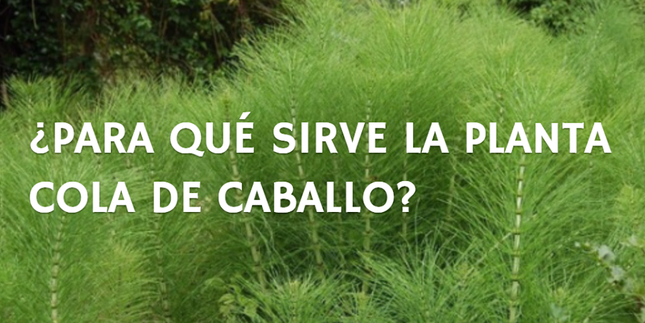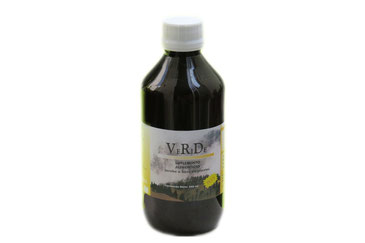
Horsetail (Equisetum Arvense L) is a perennial plant from the Equisetaceae family, common in the Northern Hemisphere. Native to Europe and northern Asia, it comes from the horsetail plants that formed large forests during the Mesozoic Era. It grows in clay or sandy soils, growing wild along riverbanks and in open fields, provided the area is humid.
What is Horsetail used for?
Horsetail's sterile stems are harvested at the end of summer. Due to its mineral content, especially potassium, horsetail has a mild diuretic effect. It can be taken as a herbal tea (a herbal tea is a beverage obtained by boiling certain combinations of herbs or spices in water, unlike an infusion, in which the water is not boiled), as a powder, as a liquid hydroalcoholic extract (drops), or in capsules containing dry extract at different concentrations. This plant, which can grow up to around eighty centimeters in height, is characterized by two types of stems: fertile and sterile.
Fertile stems are so named because they contain the reproductive organs; they are the first to sprout from the underground rhizome, appearing in late winter and spring. They are yellowish-brown and end in large spikes containing the spores. Sterile stems appear in mid-summer and die back in winter; they are hollow, grooved, and articulated with numerous lateral branches.
Why is it called Horsetail?
Once cut, the sterile stem bundles resemble a horse's tail, hence its botanical name, equisetum, which comes from the Latin equus, meaning "horse," and setum, meaning "mane or bristle," which was translated in medieval Spanish as "cauda equina," from which comes the current common name "horsetail."
Since when has Horsetail been used?
The use of horsetail for medicinal purposes dates back to ancient times. Pliny the Elder (23-79 AD) reported that horsetail had hemostatic properties and that contact with it helped stop bleeding from wounds, and Galen (130-200 AD) already mentioned its diuretic properties. In the Middle Ages, the renowned physician and religious figure Arnau de Vilanova describes using it to cure a fistula after hearing from another colleague about its healing properties.
How is Horsetail used today?
Due to its mineral salt content, especially potassium, horsetail has a mild diuretic effect. Among its mineral salts, its high silicon content is also notable, which is why its powder, when ingested, is traditionally used as a remineralizer to strengthen hair and nails. Some authors argue that its richness in silicon may make horsetail useful as an aid in maintaining collagen in connective tissue, especially in the joints. Due to its content of flavonoids and other substances, it has antioxidant properties.
Various scientific studies have also observed that, due to its volatile components, it has antimicrobial action against various bacteria and fungi. The European Medicines Agency (EMA), in its monograph, considers its traditional use as a diuretic for "urinary tract cleansing." Other monographs, such as that of the German Commission E, also cite its healing properties, when applied topically (on the skin) for wound healing. Traditionally, its mild diuretic properties are used as an aid in the treatment of overweight.
How do you take Horsetail?
The dosage recommended by the EMA (adults and adolescents over 12 years of age):
-Herbal tea: 2 to 3 g in 250 ml, 3 to 4 times a day.
-Powder: 570 mg, 3 to 4 times a day.
Horsetail is also commercially available as a liquid hydroalcoholic extract (drops) or in capsules containing dry extract at various concentrations. It is advisable not to exceed the manufacturer's recommended doses. For external use, the German Commission E monograph recommends using it in the form of compresses or washes, using a herbal tea made with 10 g of sterile horsetail stems in 1 liter of water.
How to prepare a Horsetail herbal tea
When the water boils, add the horsetail, let it steep for a couple of minutes, then turn off the heat and let it steep until lukewarm. Strain and drink, or use as a wash or compress. For drinking, you can prepare all the herbal tea you need to use during the day, but it should be stored strained and covered. In this case, if you want to drink it hot, make sure it doesn't boil again when heated. For external use, such as compresses or washes, it is advisable to prepare it every time you plan to use it.
Contraindications, adverse effects and recommendations:
-In case of hypertension or heart problems, it should only be used under medical supervision.
-It should not be used with diuretic medications because it can enhance their effect, and excessive diuresis is harmful. It should also not be used with antihypertensive medications without the supervision of a healthcare professional (doctor or pharmacist).
-Its use is not recommended during pregnancy and breastfeeding.
-In case of overdose, stomach pain, heartburn, nausea, vomiting, dry mouth, dizziness, confusion, palpitations, drowsiness, or high blood pressure may occur.
-It should not be collected in the field if you do not have botanical knowledge, since Equisetum arvense can easily be confused with another very similar species, Equisetum palustre, whose toxicity in humans is not well known, but serious poisoning has been observed in herbivorous animals.
Information note: The content included in this section offers information on existing therapies, explained by experienced specialists for educational purposes only. It is not intended, under any circumstances, to take a position on their suitability or expressly promote their use.
Source: MAPFRE by María José Alonso Osorio, Member of the Board of Medicinal Plants and Homeopathy of the Barcelona College of Pharmacists. Collaborator with Advance Medical.
























































1 comment
Padezco Edema macular lo puedo ingerir,gracias